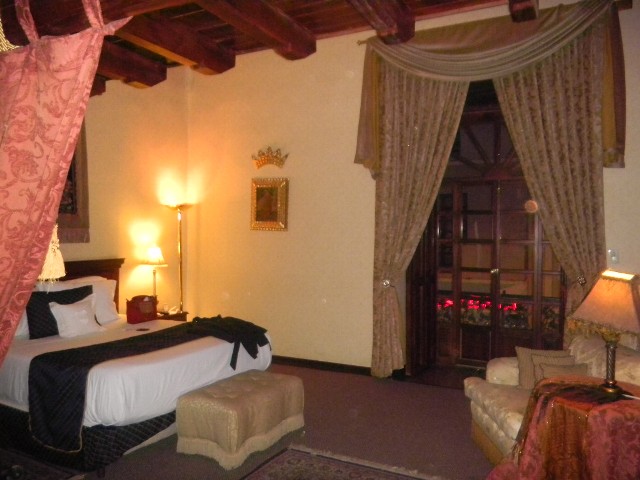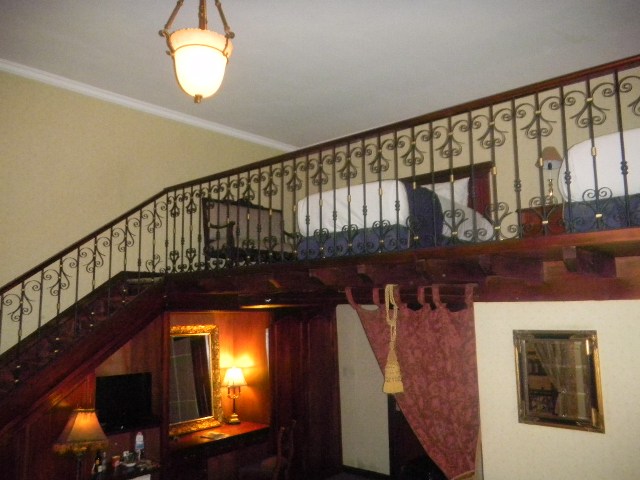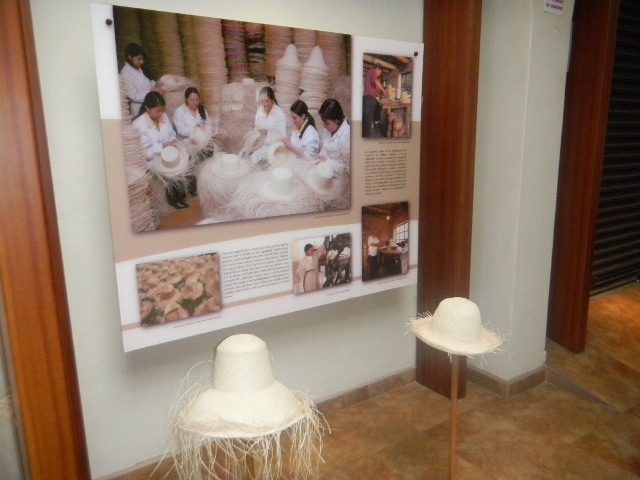Cuenca: Hotel and Panama Hats
This past weekend I went to the third-largest, colonial city of Cuenca in the south. I flew in on Friday evening so I could have all day Saturday to kick around town. However, I realized when I got to my hotel, the Hotel Santa Lucía, that it was quite possible that the hotel itself was the coolest site I was going to see all weekend. My Ecuador guidebook highly recommended the hotel for its good service, atmosphere, and meticulously restored home - a 19th-century house that was once owned by the provincial governor. Here are pictures of the huge loft room that I had:


And here is a picture of the courtyard, inside of which is the delicious Italian restaurant of the hotel:

I arrived in Cuenca in the eveningtime, so I ate dinner at the Trattoria Novacentro and had some delicious gnocchi and Chilean wine before heading up to my room to relax.
Cuenca is a tricky city: since it is so small and traditional, many sights were only open from about 9am to 1pm Saturday and weren't open at all on Sundays. Knowing this, I figured out my priorities. So, the first place I went on Saturday was to Homero Ortega P. & Hijos Panama hat musem, store and factory. The world-famous Panama hat is actually from Ecuador, predominantly from Cuenca and the surrounding region, but when large shipments of the hats were sent to Panama during the construction of the Canal, the hats became known for their port of exit instead of their country of origin. The museum held several exhibits telling about the history, production, and commercialization of the Panama hats (Homero Ortega P. & Hijos being the leading brand). Here's a photo:

After winding through the museum, the tour continues back into the actual factory. Here's an image:

From there, the tour wound into the hat store. I spent a long time trying on all of the women's and unisex styles before deciding on a pretty classic looking Panama hat. The store had a wide range of choices: some were made in about a week, and cost $20; others, the superfinos or super fine versions, were made over the course of 2 months, and cost upwards of $250 - if sold in Europe, those same hats would be priced at well over a thousand dollars. After that little jaunt into fashion culture, I headed back into the true heart of the city to amble about. See the next post!
Catherine